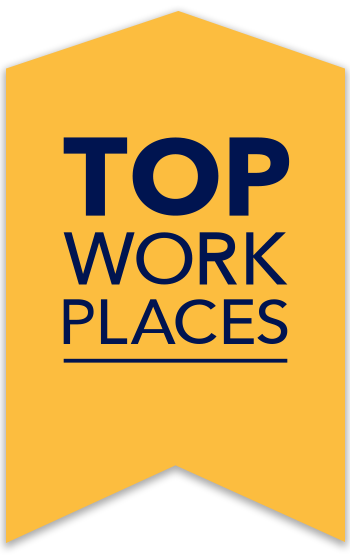Improving employee productivity gives companies a reason to celebrate and helps individuals get recognized for their contributions. Creating more efficient systems starts with measuring and improving workplace productivity on a personal level.
Understanding how to improve employee productivity in the workplace helps individuals and the organizations they work for. It’s something that everyone benefits from knowing, and the rewards are significant. Especially in today’s competitive market, employees and organizations must maximize individual and collective performance.
What is employee productivity?
Workplace productivity measures goods and services produced against the labor and costs of production. If you’re looking for growth opportunities, it’s a helpful tool for identifying low and high-performance areas. Most leaders measure productivity to determine which teams and people are performing the best. Great leaders know how to increase employee productivity in the workplace at the drop of a hat.
What can affect employee productivity?
A lot can affect employee productivity, including employee engagement and morale. And that’s not it. Keep reading to learn what impacts employee productivity the most, so you can save time and focus on only the most essential factors. From employee well-being and operational inefficiencies to leadership communication and employee burnout – there are quite a few things to keep an eye on.
Why is employee productivity important?
Employee productivity significantly affects individual performance, workplace profitability, and employee retention. Productivity indicates how well employees work to support key business goals and overall company performance. It reveals a lot about an organization, specific teams, and individuals. Measuring employee productivity well often helps companies identify problems and find solutions fast.
Most leaders understand the importance of high productivity but must figure out how to consistently achieve it. Great leaders know the secret to success is understanding your employees’ growth, motivation, and recognition preferences. Valuing those employee and organizational goals evenly helps leaders achieve higher engagement and productivity for longer.
14 Ways to improve employee productivity
Here, we highlight the 14 best ways to improve employee productivity. These tips help leaders celebrate success longer and make employees’ roles more rewarding, boosting performance and employee well-being. Try them all to explore which factors increase productivity the most at your company. Remember that documenting the data helps measure progress and success.
1. Encourage training and development
Training and development are the first tips to improve employee productivity. Why should these be the first things to explore? Because training and development opportunities teach leaders, managers, and employees new techniques and outlooks that help everyone grow together.
Encouraging training and personal development shows individuals that leadership cares about their growth, which boosts their performance numbers. At the same time, it helps companies fix widespread operational inefficiencies through education, which is highly rewarding.
Learn more: 10 Strategies to Improve Training and Development
2. Set clear goals and expectations
Next on the list of tips is setting clear goals and expectations. Productivity goals should always align with company performance goals; the clearer the connection, the better. That’s because clear, achievable company goals motivate employees to work smarter. Clear expectations minimize confusion and make it easier to celebrate growth and success – both on a company and personal level.
3. Avoid micromanaging
It’s understandable why some managers think micromanagement improves efficiency. Delegating tasks and checking progress can be helpful, but micromanagers usually make employees feel stressed and pressed for time. That’s because having someone in a leadership position breathe down your neck and question your progress negatively impacts motivation and productivity. Letting employees manage their tasks creates a confident, empowered workforce with more leadership potential.
4. Offer flexible work schedules
These days, workplace and schedule flexibility is a must for employee recruitment and retention, but it also benefits productivity. Flexibility ensures that employees work how, when, and where they get the most work done. It increases employee well-being and work-life balance, which also improves productivity naturally.
In addition to work flexibility, encouraging regular time off is another great way to maximize focus and performance when employees are on the clock. The more time employees have to recharge and spend with friends and family, the more appreciative, passionate, and refreshed they are at work.
5. Encourage team collaboration
Companies need team collaboration and interdepartmental communication to improve employee engagement and productivity. Talking and working together builds relationships within teams and across departments. Strengthened relationships and increased collaboration help employees ask for help sooner and find innovative solutions. The process increases company productivity and performance, making work more meaningful for everyone involved.
6. Provide employees with the tools they need
People need the right tools to do their job. Tools and technology are one of the best ways to improve employee productivity. Asking employees about their productivity levels and what could help them increase performance helps managers better understand bottlenecks in the system. Providing employees with all the necessary tools improves efficiency and motivation. Plus, it allows individuals to see value in themselves and their feedback.
7. Improve workplace conditions
Work environments directly impact productivity and employee well-being. When employees feel safe and inspired by their surroundings, they’re more likely to increase productivity. Small factors, like natural light, oversized windows, plants, colorful walls, and smart technology go a long way. It may seem unnecessary, but improved workplace conditions help everything from engagement to recruitment and retention.
8. Optimize emails and meetings
Time is a significant component of productivity. Time-consuming meetings and emails take employees away from their work, so it’s helpful to turn meeting into emails when possible. And make those emails as efficient as possible. Curious about how to make your emails more efficient? Keep it brief with short, simple emails at optimal times in the workweek.
Face-to-face meetings are still a great way to connect and motivate employees, but making them less frequent is crucial. Reducing the number of meetings, the number of people in those meetings, and the total time spent shows employees how much you value them and their responsibilities.
9. Improve communication
Better communication helps companies increase productivity and focus on what’s important. A few of these tips are meant to help companies improve communication, but it’s important to mention the topic on its own. Get employee feedback about interdepartmental, leadership, and team communication. Ask employees how they prefer to communicate with others. Creating ideal means of communication minimizes frustrations and helps more people feel heard.
10. Promote employee well-being
Employee well-being is vital for organizational health, happiness, and productivity. It’s a hot trend right now, and for a good reason. Promoting employee well-being helps everything from employee productivity to brand reach. People want to work where they are valued and feel their best, so employees will always choose companies with strong well-being focus over those without.
Promoting health insurance benefits, offering wellness programs, and celebrating employee accomplishments are great ways to improve employee well-being and, in turn, increase productivity.
11. Promote company culture
Company culture influences a lot, including employee productivity levels. Improving how a company and its leaders talk about big-picture goals and performance directly impacts employee motivation. That’s because when organizations improve company culture, they discuss shared goals, employee support, and company vision. All these things make employees feel more connected, excited, and productive.
12. Incentivize employees
Employee recognition and appreciation are key drivers of employee engagement and productivity. Incentivizing employees to work smarter and recognizing their progress and success motivates individuals to get more done. That’s because most people like getting rewarded for their hard work, which makes sense.
Creating fun incentives improve employee productivity and make work more rewarding. Incentive examples include handwritten notes, extra vacation days, promotions, training and development opportunities, and office-related coupons.
13. Match tasks to employees skills
Matching tasks to employee skills is one of the best ways to boost productivity – even if it’s featured second to last on this list. Like matching company goals with individual goals, it’s essential to consider what your employees like to do and what they’re good at when assigning tasks.
Giving employees responsibilities matching their unique skills and interests will connect them more to the task at hand and their performance. Before you delegate a task, ask yourself if it’s going to the right employee. If not, offer it to someone else and give that person a more fitting one.
14. Give and receive feedback
And the final tip for how to improve employee productivity – everything starts and ends with feedback. In the workplace, it’s essential to have two-way feedback between employees and leadership. Improving efficiency and productivity begins with sharing information, and it should be a joint effort.
Giving and listening to feedback helps employees and leaders share valuable information and gives everyone a better understanding of the bigger picture. Making feedback processes easy and rewarding gets more people to share their thoughts and make systems more productive. One small insight can change your perspective on everything.
How to measure employee productivity
You need to know how to measure employee productivity to show progress with any of these initiatives. Here are a few efficient measurement tools:
- Amount of work
- Number of goals met
- Overall profit
- Quality of work
- Time spent
Improve productivity with employee feedback
Employee engagement surveys are the best tool for measuring and improving productivity. The Energage Workplace Survey identifies bottlenecks, motivations, and opinions that impact day-to-day productivity. Plus, surveys are a great way to monitor growth over time. Nominate your organization today to survey, track productivity insights, and celebrate achievements!


